Durability is more important than brightness, which is what we know about light bulbs.
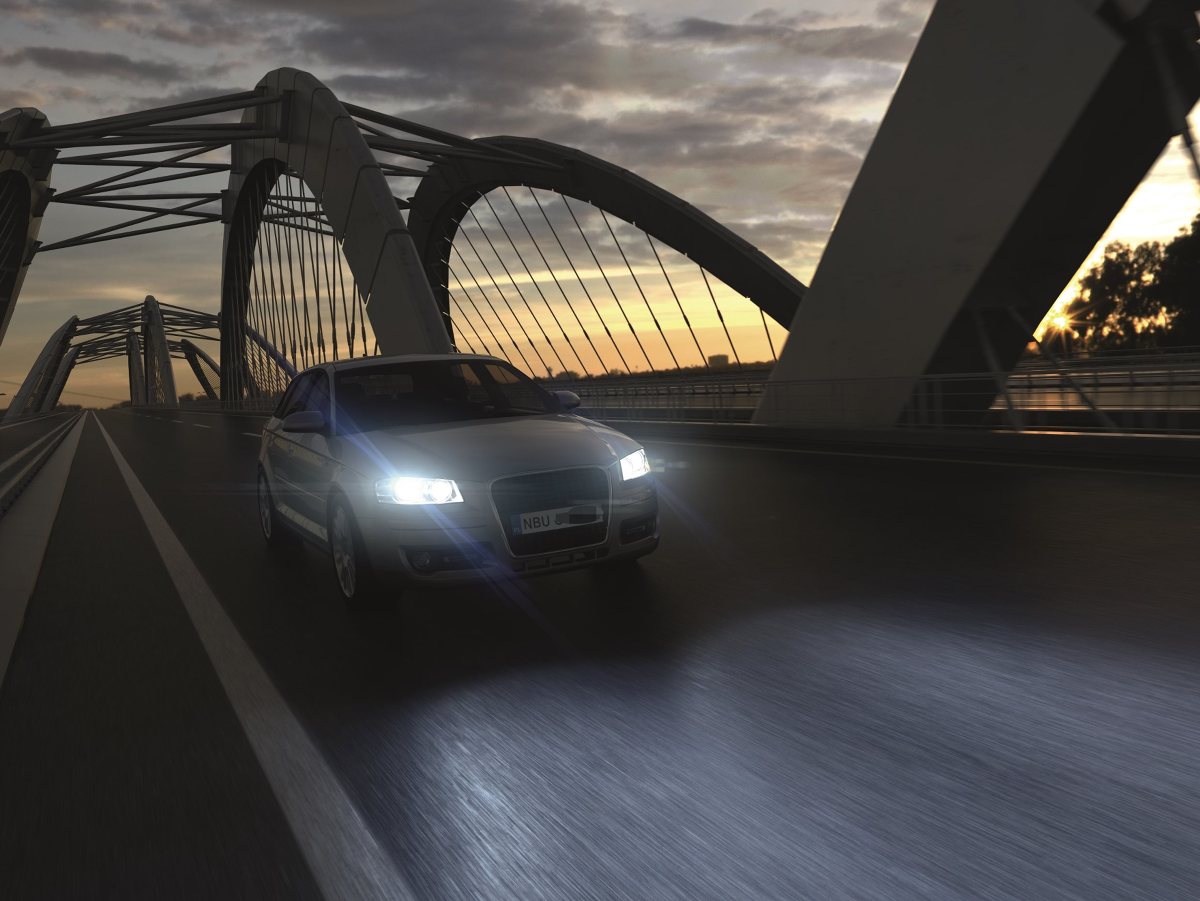 Proper car lighting is very important for safety, say the drivers who took part in the study. Unfortunately, despite this, most of them still know too little about how to properly select and use lighting.
Proper car lighting is very important for safety, say the drivers who took part in the study. Unfortunately, despite this, most of them still know too little about how to properly select and use lighting.
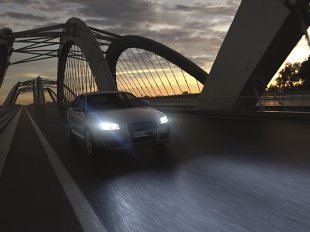 According to a study carried out in August by the ARC Rynek i Opinia Research Institute commissioned by OSRAM, not all Polish drivers have sufficient knowledge of car lighting. Meanwhile, mismatched, misaligned, or blown headlights can cause a collision or accident, especially now that the days are getting shorter and we drive after dark more often.
According to a study carried out in August by the ARC Rynek i Opinia Research Institute commissioned by OSRAM, not all Polish drivers have sufficient knowledge of car lighting. Meanwhile, mismatched, misaligned, or blown headlights can cause a collision or accident, especially now that the days are getting shorter and we drive after dark more often.
Lighting is important, but we still have a lot of catching up to do
Polish drivers consider lighting to be the third most important element of car safety. The list of main components includes braking and steering systems, as well as seat belts and airbags. Although 90 percent of respondents admitted that they do not drive without the lights on, this is almost 80 percent. respondents often encounter cars without headlights on the road.
 Although drivers have heard about the various properties of car bulbs, their purchase is mainly guided by previous experience (39%) and price (33%). Only one in four pays attention to the most important factor in lighting efficiency, which is the parameters of light bulbs, i.e. more light, more range or whiter color. In addition, 83 per cent. of respondents cited durability as the most important element of automotive light bulbs. Of course, the longer the headlights last, the less problems with their replacement, tuning and visiting the service. But light sources that emit more light can improve driving comfort and safety.
Although drivers have heard about the various properties of car bulbs, their purchase is mainly guided by previous experience (39%) and price (33%). Only one in four pays attention to the most important factor in lighting efficiency, which is the parameters of light bulbs, i.e. more light, more range or whiter color. In addition, 83 per cent. of respondents cited durability as the most important element of automotive light bulbs. Of course, the longer the headlights last, the less problems with their replacement, tuning and visiting the service. But light sources that emit more light can improve driving comfort and safety.
Look and see
Meanwhile, contrast is of great importance for good vision.
– If it is too small, the ability to effectively see objects and distinguish them from the background is not guaranteed. Even if the driver shifts his gaze to the corresponding object, a road sign, a pedestrian or a cyclist on the side of the road, in such conditions he can see, but not see, that is, he will not recognize the danger and will not perform the correct maneuver, explains Dr. Adam Trapkowski, ophthalmologist, MD Sciences.
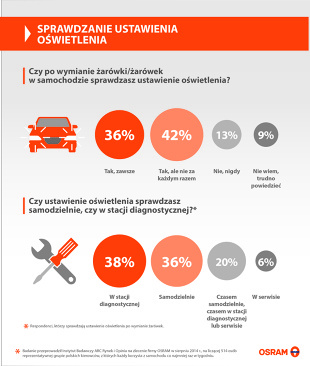 Therefore, factors that impair vision with good contrast should be reduced or eliminated. Correctly located headlights with bulbs that give a bright light, similar to daylight, play a priority role.
Therefore, factors that impair vision with good contrast should be reduced or eliminated. Correctly located headlights with bulbs that give a bright light, similar to daylight, play a priority role.
To see well and travel safely, we must not forget about the correction of existing visual defects, such as myopia, hyperopia or astigmatism. In twilight conditions, when the pupil expands, they appear to a greater extent. Therefore, it is worthwhile to undergo periodic ophthalmological examinations to exclude diseases that affect twilight vision, or to start their treatment early enough.
Eyes are not all
– Lighting affects well-being, psyche, emotional states and even physiological processes. Not only what we see is important, but also how we see it. Vision gives us more information than all the other senses combined. Insufficient light quality can significantly limit our visual performance, says Dr. Andrzej Markowski, traffic psychologist, vice president of the Association of Transport Psychologists in Poland.
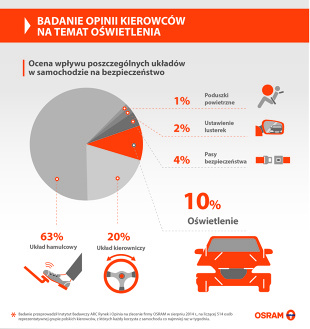 It is worth realizing that at night the reaction time of a driver with high psychomotor performance is three times longer than during the day. At the same time, we consciously perceive three times less information. After two hours of continuous driving at night, we react as if we have 0,5 ppm of alcohol in our blood, and after 4,5 hours - 1 ppm. The consequence of visual impairment is nervous fatigue, manifested by sudden drowsiness, a feeling of irritation, severe pain in the neck, and sometimes nausea.
It is worth realizing that at night the reaction time of a driver with high psychomotor performance is three times longer than during the day. At the same time, we consciously perceive three times less information. After two hours of continuous driving at night, we react as if we have 0,5 ppm of alcohol in our blood, and after 4,5 hours - 1 ppm. The consequence of visual impairment is nervous fatigue, manifested by sudden drowsiness, a feeling of irritation, severe pain in the neck, and sometimes nausea.
At night, when there are more glare, accidents occur by a third more than during the day. Unfortunately, we do not pay attention to the headlight adjustment - only 36 percent. drivers check them after every bulb change. When asked how we do it, 44 percent. admitted that they examine them at a diagnostic station or in a service, but more than a third of drivers do it themselves. And this often means that such a headlight shines incorrectly - too low or blinding other road users.
Quality and safety, or why you should not save
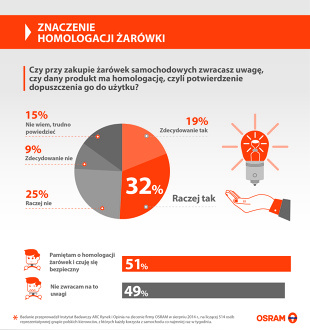 Proper road lighting is essential for road safety. It is important to choose the right bulbs, clean and adjust the headlights and protect the system from overvoltage. Approval should be one of the key elements when it comes to quality, not to mention that the use of unapproved external light sources is prohibited. However, only half of the drivers pay attention to whether the goods they purchase are allowed to be used. In addition, as much as 92 percent. of the respondents do not know what symbol the tolerance is marked with (we are talking about the E1 marking).
Proper road lighting is essential for road safety. It is important to choose the right bulbs, clean and adjust the headlights and protect the system from overvoltage. Approval should be one of the key elements when it comes to quality, not to mention that the use of unapproved external light sources is prohibited. However, only half of the drivers pay attention to whether the goods they purchase are allowed to be used. In addition, as much as 92 percent. of the respondents do not know what symbol the tolerance is marked with (we are talking about the E1 marking).
When choosing light sources, remember that the key points in terms of safety and our reaction are not directly in front of the hood, but 50 m and 75 m on the right side of the road and 50 m in front of the car. More light means those places will be brighter. Only 20 percent. more light at these points can cause the reaction time after dark to be three or two times longer than during the day, which is a big difference. There are bulbs on the market that, compared to standard products, have a range of up to 40 m more, and in places that are responsible from the point of view of safety, illuminate the road up to 110%. brighter. They also give 20 percent. whiter light than standard incandescent bulbs, which improves driving comfort by reducing eye fatigue while making lanes, traffic signs or people walking on the road clearly visible.
The study was carried out by the ARC Rynek i Opinia Research Institute commissioned by OSRAM in August 2014 on a representative group of 514 Polish drivers, each of whom uses a car at least once a week.

